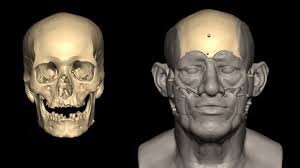Genome:

Researchers recently sequenced the first whole ancient Egyptian genome from an individual who lived 4,500 to 4,800 years ago — the oldest DNA sample from Egypt to date.
- A genome is an organism’s complete set of genetic information.
- A genome includes all of the hereditary instructions for creating and maintaining life, as well as instructions for reproduction.
- The human genome, like all other cellular life forms, consists of DNA (deoxyribonucleic acid) and includes both the nuclear and mitochondrial DNA.
- This is in contrast to ribonucleic acid (RNA) viruses, whose genome is composed of RNA.
- The instructions in our genome are made up of DNA.
- Within DNA is a unique chemical code that guides an organism’s growth, development and health.
- This code is determined by the order of the four nucleotide bases that make up DNA: adenine, thymine, cytosine, and guanine.
- DNA has a twisted structure in the shape of a double helix.
- Single strands of DNA are coiled up into structures called chromosome.
- Within chromosomes, sections of DNA are organised into genes.
- Genes control different characteristics such as eye colour and height.
- All living things have a unique genome.
- There are 23 pairs of chromosomes in the human genome.
- Between 1990 and 2003, all twenty-three pairs were fully sequenced through an international research undertaking known as the Human Genome Project.




